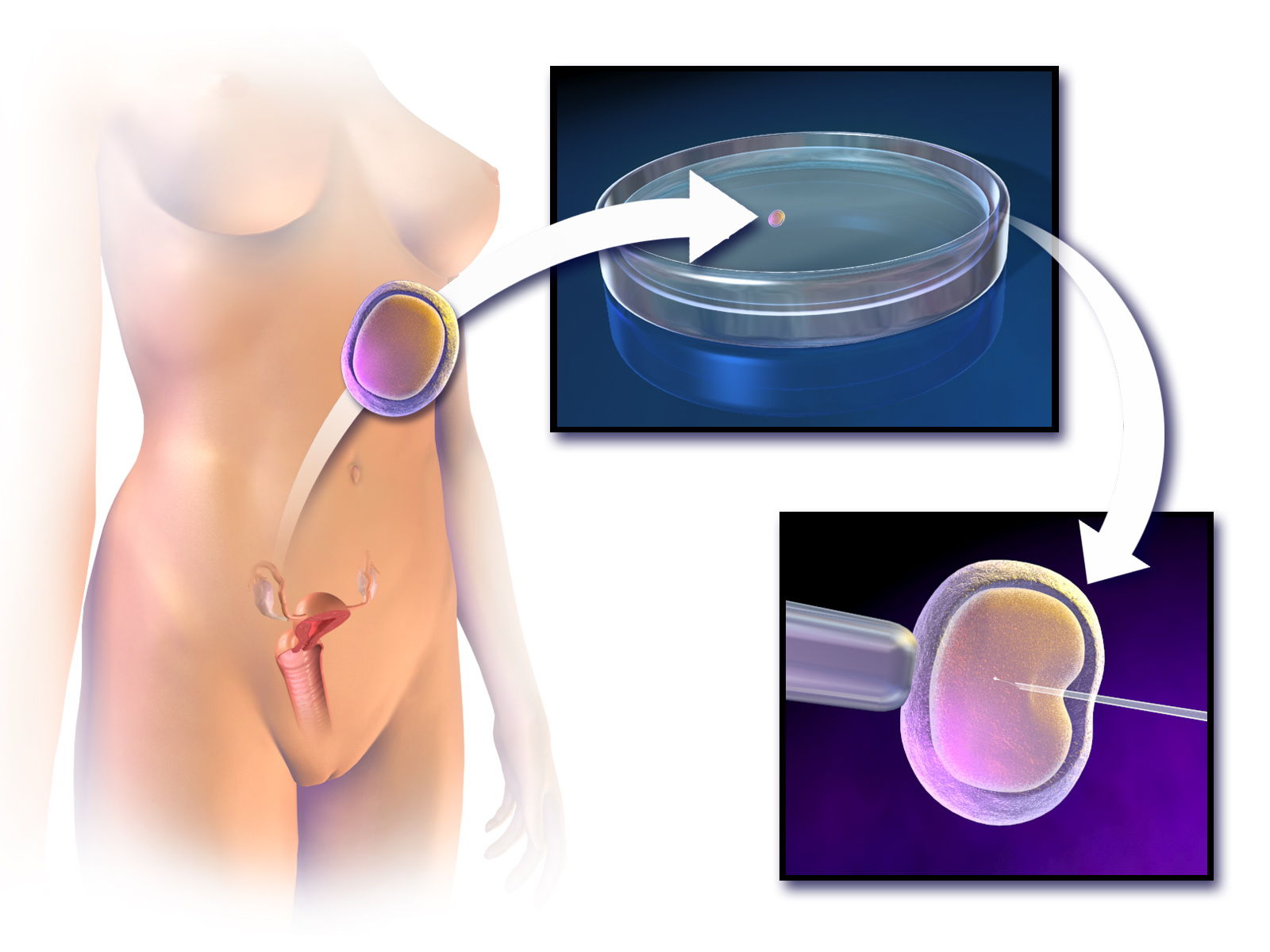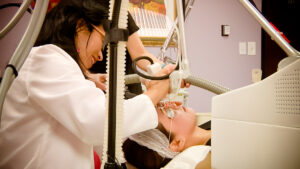IVF Procedure: Guide to In Vitro Fertilization– In today’s world, medical advancements have opened up numerous possibilities for couples struggling with infertility. One such advancement is In Vitro Fertilization (IVF), a technique that has helped millions of couples achieve their dream of having a baby. This comprehensive guide will walk you through the entire IVF procedure, providing you with a clear understanding of what to expect at each step.
IVF Procedure: Guide to In Vitro Fertilization / IVF Procedure: Guide to In Vitro Fertilization / IVF Procedure: Guide to In Vitro Fertilization
1. Introduction
What is IVF?
IVF, short for In Vitro Fertilization, is a fertility treatment that involves the fertilization of an egg by sperm outside the woman’s body. The fertilized embryo is then transferred into the woman’s uterus, with the hope of achieving a successful pregnancy.
Why is IVF used?
IVF is recommended for couples who have been struggling with infertility due to various reasons, such as blocked fallopian tubes, male factor infertility, ovulation disorders, or unexplained infertility. It can also be a suitable option for individuals or same-sex couples looking to have a child.
Brief history of IVF
The first successful IVF procedure was performed in 1978, resulting in the birth of Louise Brown, the world’s first “test-tube baby.” Since then, IVF techniques have improved significantly, and it has become a widely accepted and effective treatment for infertility.
2. Preparing for IVF
Before starting the IVF procedure, it is essential to undergo an initial consultation with a fertility specialist. During this consultation, your medical history and fertility tests will be evaluated to determine the most appropriate treatment plan for your specific situation. Lifestyle changes, such as quitting smoking, reducing alcohol consumption, and improving overall health, may be recommended to optimize your chances of success.
3. Stimulation of the ovaries
To increase the chances of obtaining multiple eggs for fertilization, fertility medications are administered to stimulate the ovaries. These medications help in the development and maturation of multiple follicles, which contain the eggs. Regular monitoring through transvaginal ultrasounds and blood tests is conducted to track follicle growth. When the follicles reach the desired size, a trigger shot is given to induce ovulation.
4. Egg retrieval
The egg retrieval procedure is typically performed 36 hours after the trigger shot. It is a minor surgical procedure carried out under sedation or anesthesia. Using a transvaginal ultrasound-guided needle, the eggs are gently aspirated from the follicles. The retrieved eggs are then placed in a culture medium and transferred to the laboratory for further processing.
5. Sperm collection and preparation
On the day of egg retrieval, the male partner provides a semen sample. The sperm can be collected through ejaculation or surgically extracted in cases of male infertility. The semen sample undergoes a series of laboratory processes to separate the healthy and motile sperm from the seminal fluid.
6. Fertilization
There are two primary methods of fertilization used in IVF: insemination and intracytoplasmic sperm injection (ICSI). In insemination, the retrieved eggs and prepared sperm are combined in a laboratory dish, allowing fertilization to occur naturally. In cases where there are concerns about sperm quality or previous fertilization failures, ICSI may be recommended. ICSI involves injecting a single sperm directly into each mature egg.
7. Embryo development and selection
After fertilization, the embryos are cultured in a laboratory for several days. The embryologists monitor their development and grade them based on their appearance and growth potential. In some cases, preimplantation genetic testing (PGT) may be performed to screen for specific genetic conditions or chromosomal abnormalities.
8. Embryo transfer
Embryo transfer is the process of placing the selected embryos into the woman’s uterus. The timing of the transfer is crucial and is typically determined based on the embryo’s developmental stage. Using a thin catheter, the embryos are carefully inserted into the uterus, aiming for optimal placement. The number of embryos to transfer depends on various factors, including the woman’s age, embryo quality, and the couple’s preferences.
9. The two-week wait
Following the embryo transfer, there is a waiting period of approximately two weeks before a pregnancy test can be conducted. During this time, progesterone supplementation may be given to support the uterine lining and increase the chances of successful implantation. The two-week wait can be emotionally challenging, filled with anticipation, hope, and anxiety.
10. Frozen embryo transfer (FET)
In some cases, surplus embryos from the fresh IVF cycle can be cryopreserved for future use. Frozen embryo transfer (FET) allows for the transfer of these cryopreserved embryos without the need for ovarian stimulation. Thawing and preparing the embryos for transfer is a carefully controlled process, and the procedure is similar to that of a fresh embryo transfer.
11. Success rates and outcomes
The success rates of IVF can vary depending on several factors, including the woman’s age, the underlying cause of infertility, and the quality of the embryos. It is important to have realistic expectations and understand that achieving a successful pregnancy may require multiple IVF cycles. Additionally, multiple pregnancies (twins or more) can occur with IVF, and the risks and complications associated with carrying multiple fetuses should be considered.
12. Emotional and physical considerations
Undergoing IVF can be an emotional rollercoaster for couples. The anticipation, hope, and potential disappointments can take a toll on one’s mental well-being. It is crucial to seek emotional support, communicate openly with your partner, and explore coping strategies such as counseling or support groups. Additionally, the fertility medications and procedures can have physical side effects, such as bloating, breast tenderness, and mood swings. It is important to be prepared for these potential challenges and take care of yourself during the process.
13. Risks and complications
As with any medical procedure, IVF carries certain risks and potential complications. Ovarian hyperstimulation syndrome (OHSS) is one such risk, characterized by swollen and painful ovaries. Multiple pregnancies also carry increased risks for both the mother and the babies. Additionally, there is a small risk of ectopic pregnancy, where the embryo implants outside the uterus. It is crucial to discuss these risks with your fertility specialist and seek prompt medical attention if you experience any concerning symptoms.
14. Alternative options and considerations
While IVF is a widely used and successful fertility treatment, it may not be the best option for everyone. Depending on individual circumstances, alternative options such as using donor eggs or sperm, surrogacy, or adoption may be considered. It is important to have open and honest discussions with your fertility specialist to explore all available options and make an informed decision that aligns with your values and desires.
15. Conclusion
In Vitro Fertilization (IVF) offers hope and possibilities for couples struggling with infertility. This comprehensive guide has provided you with a step-by-step understanding of the IVF procedure, from initial consultations and preparations to embryo transfer and the two-week wait. It is essential to remember that every individual’s journey is unique, and success rates can vary. Stay positive, seek support, and work closely with your fertility specialist to increase your chances of achieving a successful pregnancy.
FAQs
- How long does the entire IVF process take?
- The entire IVF process typically takes around four to six weeks, depending on the specific treatment plan and individual circumstances.
- Are there any age limitations for undergoing IVF?
- While there is no strict age limit for undergoing IVF, the chances of success decline with advancing age. It is advisable to consult with a fertility specialist to assess your individual situation.
- Are there any natural ways to increase the success of IVF?
- While IVF is a medical procedure, certain lifestyle changes such as maintaining a healthy weight, following a balanced diet, reducing stress, and avoiding alcohol and tobacco can positively impact the success of IVF.
- What happens to the unused embryos after IVF?
- Unused embryos can be cryopreserved (frozen) for future use or donated to other couples who require donor embryos. Alternatively, they can be discarded according to the couple’s wishes and legal regulations.
- What if the first IVF cycle is unsuccessful? Should I try again?
- If the first IVF cycle is unsuccessful, it can be disheartening. However, many couples achieve success with subsequent cycles. It is recommended to discuss your options with your fertility specialist and consider factors such as age, embryo quality, and any additional diagnostic information to make an informed decision.




